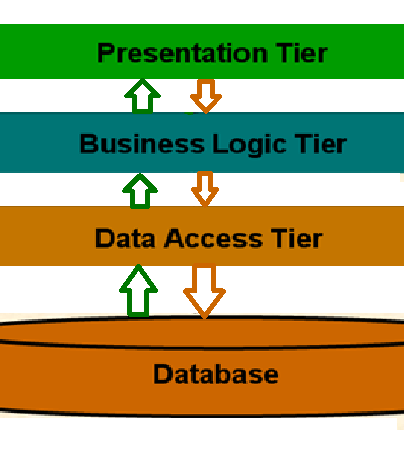Introduction of Asp.net Datalist Control
Introduction of Asp.net Datalist Control:
ASP.NET DataList Control:
The DataList control like the Repeater control is a template
driven, light weight control, and acts as a container of repeated data items.
The templates in this control are used to define the data that it will contain.
It is flexible in the sense that you can easily customize the display of one or
more records that are displayed in the control. You have a property in the
DataList control called RepeatDirection that can be used to customize the
layout of the control.
The RepeatDirection property can accept one of two values,
that is, Vertical or Horizontal. The RepeatDirection is Vertical by default.
However, if you change it to Horizontal, rather than displaying the data as
rows and columns, the DataList control will display them as a list of records
with the columns in the data rendered displayed as rows.
This comes in handy, especially in situations where you have
too many columns in your database table or columns with larger widths of data.
As an example, imagine what would happen if there is a field called Address in
our Employee table having data of large size and you are displaying the data
using a Repeater, a DataGrid, or a GridView control. You will not be able to
display columns of such large data sizes with any of these controls as the
display would look awkward. This is where the DataList control fits in.
DataList control in Asp.net:
In a sense, you can think the DataList control as a
combination of the DataGrid and the Repeater controls. You can use templates
with it much as you did with a Repeater control and you can also edit the
records displayed in the control, much like the DataGrid control of ASP.NET.
The next section compares the features of the three controls that we have
mentioned so far, that is, the Repeater, the DataList, and the DataGrid control
of ASP.NET.
When the web page is in execution with the data bound to it
using the Page_Load event, the data in the DataList control is rendered as
DataListItem objects, that is, each item displayed is actually a DataListItem.
Similar to the Repeater control, the DataList control does not have Paging and
Sorting functionalities build into it.
Use of DataList Control:
To use this control, drag and drop the control in the design
view of the web form onto a web form from the toolbox.




Comments
Post a Comment